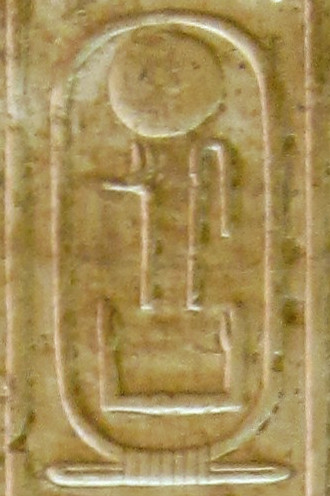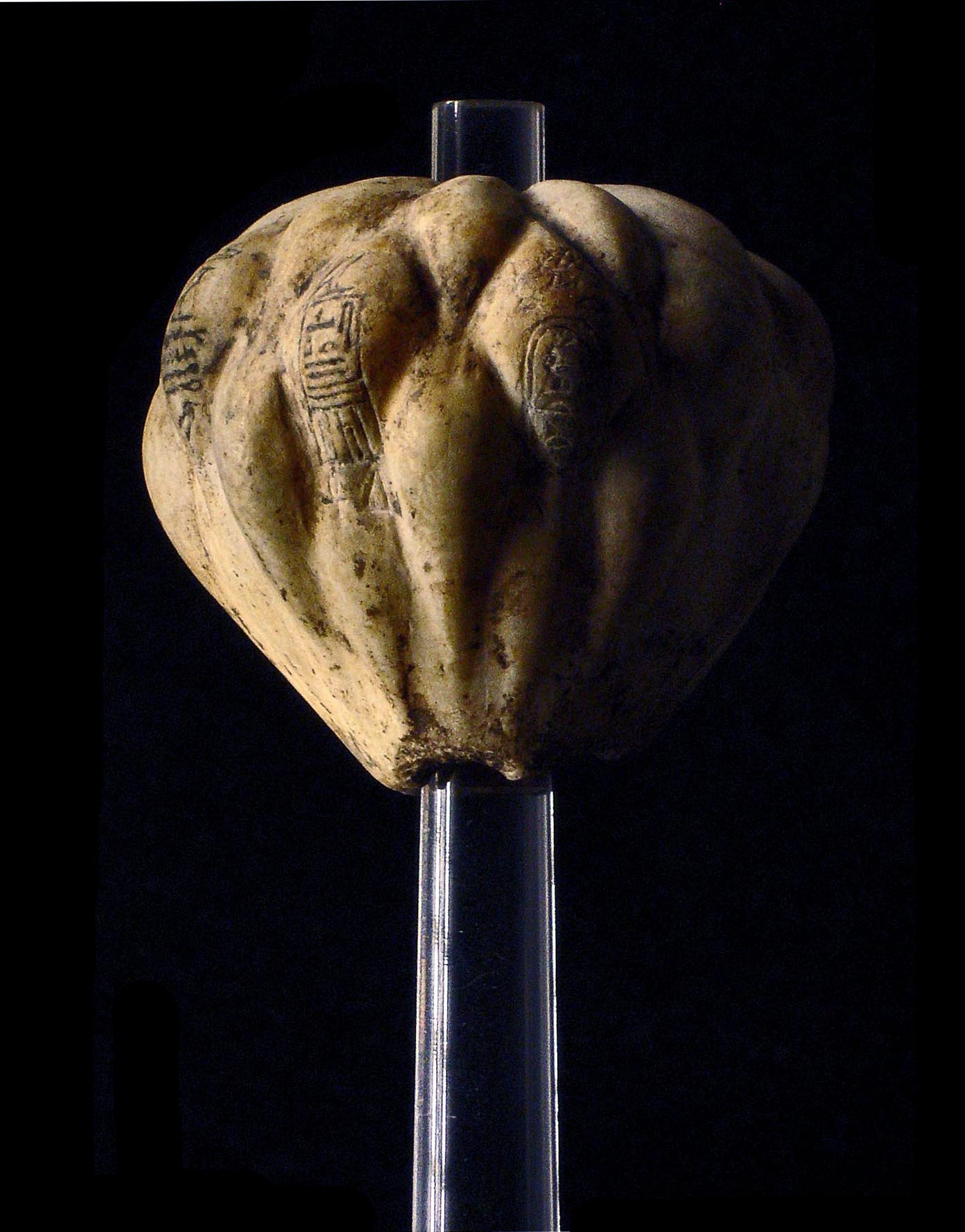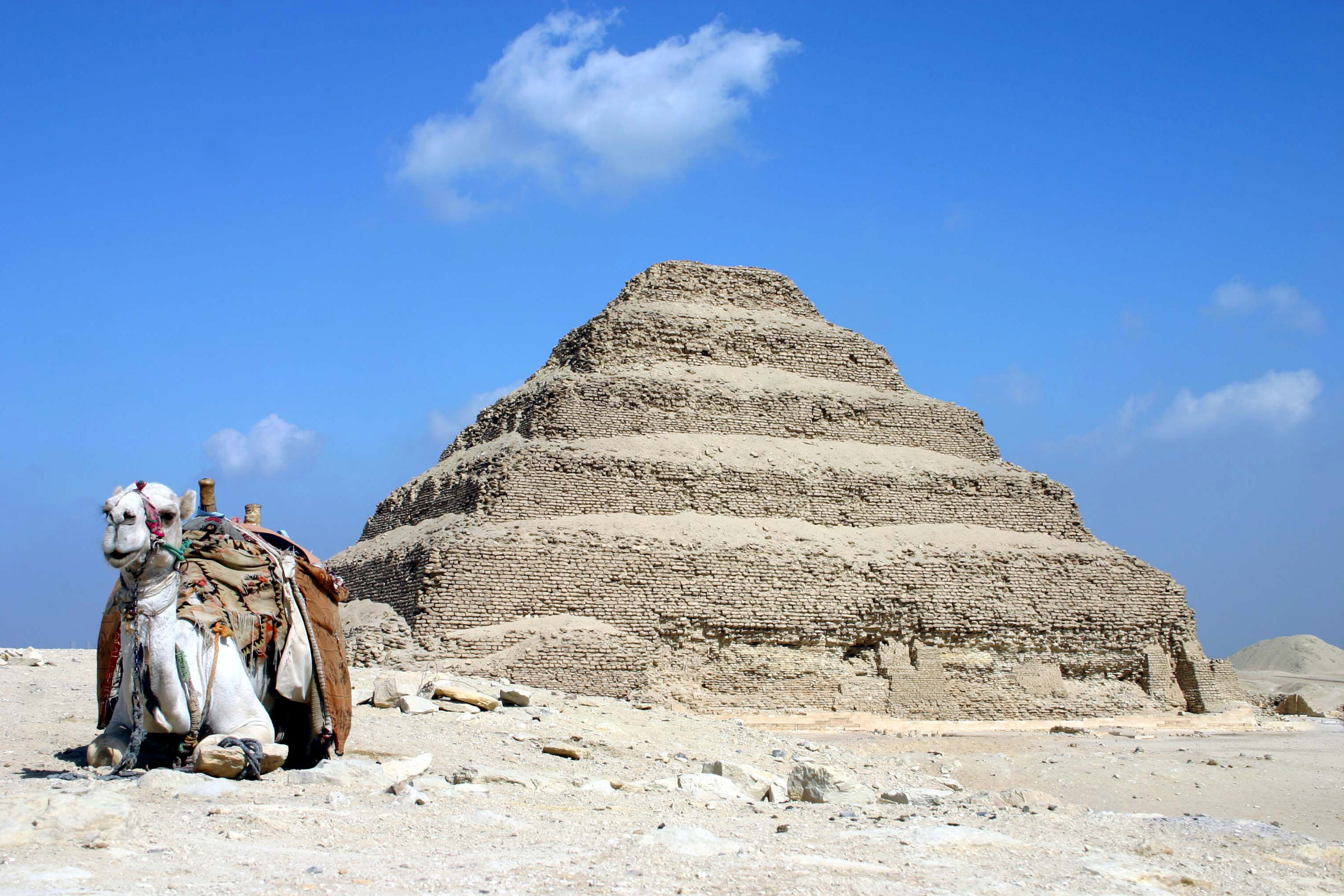|
Merefnebef
Merefnebef, also called Unisankh and Fefi, was a Vizier (Ancient Egypt), vizier from the Sixth Dynasty of Egypt. He first served at the court of Teti, possibly became vizier during the reign of Userkare, and was dismissed during the reign of Pepi I.Naguib Kanawati, Conspiracies in the Egyptian Palace: Unis to Pepy I, (Routledge, 2002). . Biography Merefnebef was a hereditary prince and count. He served as a treasurer of the King of Lower Egypt, and held positions which placed him close to the king. He was a keeper of the head ornaments, and was privy to the secrets of the House of the Morning. Some of his titles say he was a guard and priest of Teti's pyramid. He may have become a vizier late in his career and those titles are recorded on the façade of his tomb. Tomb The mastaba of Merefnebef is located to the west of the Step Pyramid of Djoser. It is relatively small, but fully decorated. The burial chamber contained a sarcophagus with a lid. The scenes in the tomb show deliber ... [...More Info...] [...Related Items...] OR: [Wikipedia] [Google] [Baidu] |
Saqqara
Saqqara ( ar, سقارة, ), also spelled Sakkara or Saccara in English , is an Egyptian village in Giza Governorate, that contains ancient burial grounds of Egyptian royalty, serving as the necropolis for the ancient Egyptian capital, Memphis. Saqqara contains numerous pyramids, including the Step pyramid of Djoser, sometimes referred to as the Step Tomb, and a number of mastaba tombs. Located some south of modern-day Cairo, Saqqara covers an area of around . Saqqara contains the oldest complete stone building complex known in history, the Pyramid of Djoser, built during the Third Dynasty. Another sixteen Egyptian kings built pyramids at Saqqara, which are now in various states of preservation. High officials added private funeral monuments to this necropolis during the entire Pharaonic period. It remained an important complex for non-royal burials and cult ceremonies for more than 3,000 years, well into Ptolemaic and Roman times. North of the area known as Saqqara lie ... [...More Info...] [...Related Items...] OR: [Wikipedia] [Google] [Baidu] |
Vizier (Ancient Egypt)
The vizier () was the highest official in ancient Egypt to serve the pharaoh (king) during the Old, Middle, and New Kingdoms. Vizier is the generally accepted rendering of ancient Egyptian , etc., among Egyptologists. The ''Instruction of Rekhmire'' (''Installation of the Vizier''), a New Kingdom text, defines many of the duties of the , and lays down codes of behavior. The viziers were often appointed by the pharaoh. During the 4th Dynasty and early 5th Dynasty, viziers were exclusively drawn from the royal family; from the period around the reign of Neferirkare Kakai onwards, they were chosen according to loyalty and talent or inherited the position from their fathers. Responsibilities The viziers were appointed by the pharaohs and often belonged to a pharaoh's family. The vizier's paramount duty was to supervise the running of the country, much like a prime minister. At times this included small details such as sampling the city's water supply. All other lesser supervis ... [...More Info...] [...Related Items...] OR: [Wikipedia] [Google] [Baidu] |
Sixth Dynasty Of Egypt
The Sixth Dynasty of ancient Egypt (notated Dynasty VI), along with the Third, Fourth and Fifth Dynasty, constitutes the Old Kingdom of Dynastic Egypt. Pharaohs Known pharaohs of the Sixth Dynasty are listed in the table below. Manetho accords the dynasty 203 regnal years from Teti to Nitocris, while the Turin Canon assigns 181 regnal years, but with three additional kings concluding with Aba – discounting the reigns of the added Eighth Dynasty kings, this is reduced to 155 regnal years. This estimate varies between both scholar and source. History The Sixth Dynasty is considered by many authorities as the last dynasty of the Old Kingdom, although ''The Oxford History of Ancient Egypt'' includes Dynasties VII and VIII as part of the Old Kingdom. Manetho writes that these kings ruled from Memphis, since their pyramids were built at Saqqara, very close one to another. By the Fifth Dynasty, the religious institution had established itself as the dominan ... [...More Info...] [...Related Items...] OR: [Wikipedia] [Google] [Baidu] |
Pepi I
Pepi I Meryre (also Pepy I) was an ancient Egyptian pharaoh, third king of the Sixth Dynasty of Egypt, who ruled for over 40 years at the turn of the 24th and 23rd centuries BC, toward the end of the Old Kingdom period. He was the son of Teti, the founder of the dynasty, and ascended the throne only after the brief intervening reign of the shadowy Userkare. His mother was Iput, who may have been a daughter of Unas, the final ruler of the preceding Fifth Dynasty. Pepi I, who had at least six consorts, was succeeded by his son Merenre Nemtyemsaf I, with whom he may have shared power in a coregency at the very end of his reign. Pepi II Neferkare, who might also have been Pepi I's son, succeeded Merenre. Several difficulties accumulated during Pepi's reign, beginning with the possible murder of his father and the ensuing reign of Userkare. Later, probably after his twentieth year of reign, Pepi faced a harem conspiracy hatched by one of his consorts who m ... [...More Info...] [...Related Items...] OR: [Wikipedia] [Google] [Baidu] |
Userkare
Userkare (also Woserkare, meaning "Powerful is the soul of Ra") was the second pharaoh of the Sixth Dynasty, reigning briefly, 1 to 5 years, in the late 24th to early 23rd century BC. Userkare's relation to his predecessor Teti and successor Pepi I is unknown and his reign remains enigmatic. Although he is attested in historical sources, Userkare is completely absent from the tomb of the Egyptian officials who lived during his reign. In addition, the Egyptian priest Manetho reports that Userkare's predecessor Teti was murdered. Userkare is often considered to have been a short-lived usurper. Alternatively, he may have been a regent who ruled during Teti's son's childhood who later ascended the throne as Pepi I. Attestations Historical sources Userkare is present on the Abydos King List, a list of kings written during the reign of Seti I (1290–1279 BC) over 1000 years after the early Sixth Dynasty. Userkare's cartouche occupies the 35th entry of the list, between those ... [...More Info...] [...Related Items...] OR: [Wikipedia] [Google] [Baidu] |
Sixth Dynasty Of Egypt
The Sixth Dynasty of ancient Egypt (notated Dynasty VI), along with the Third, Fourth and Fifth Dynasty, constitutes the Old Kingdom of Dynastic Egypt. Pharaohs Known pharaohs of the Sixth Dynasty are listed in the table below. Manetho accords the dynasty 203 regnal years from Teti to Nitocris, while the Turin Canon assigns 181 regnal years, but with three additional kings concluding with Aba – discounting the reigns of the added Eighth Dynasty kings, this is reduced to 155 regnal years. This estimate varies between both scholar and source. History The Sixth Dynasty is considered by many authorities as the last dynasty of the Old Kingdom, although ''The Oxford History of Ancient Egypt'' includes Dynasties VII and VIII as part of the Old Kingdom. Manetho writes that these kings ruled from Memphis, since their pyramids were built at Saqqara, very close one to another. By the Fifth Dynasty, the religious institution had established itself as the dominan ... [...More Info...] [...Related Items...] OR: [Wikipedia] [Google] [Baidu] |
Teti
Teti, less commonly known as Othoes, sometimes also Tata, Atat, or Athath in outdated sources, was the first king of the Sixth Dynasty of Egypt. He was buried at Saqqara. The exact length of his reign has been destroyed on the Turin King List but is believed to have been about 12 years. Biography Teti had several wives: *Iput, the daughter of Unas, the last king of the Fifth dynasty. Iput was the mother of Pepi I. *Khuit, who may have been the mother of Userkare (according to Jonosi and Callender)Miroslav Verner, The Pyramids,1994 *Khentkaus IV *Neith Teti is known to have had several children. He was the father of at least three sons and probably ten daughters. Of the sons, two are well attested, a third one is likely: * Pepi I * Tetiankhkem * Nebkauhor, with the name of Idu, "king’s eldest son of his body", buried in the mastaba of Vizier Akhethetep/Hemi, buried in a fallen Vizier’s tomb, within the funerary complex of his maternal grandfather According to N. Kanawati, T ... [...More Info...] [...Related Items...] OR: [Wikipedia] [Google] [Baidu] |
Lower Egypt
Lower Egypt ( ar, مصر السفلى '; ) is the northernmost region of Egypt, which consists of the fertile Nile Delta between Upper Egypt and the Mediterranean Sea, from El Aiyat, south of modern-day Cairo, and Dahshur. Historically, the Nile River split into seven branches of the delta in Lower Egypt. Lower Egypt was divided into nomes and began to advance as a civilization after 3600 BC. Today, it contains two major channels that flow through the delta of the Nile River – Mahmoudiyah Canal (ancient Agathos Daimon) and Muways Canal (, "waterway of Moses"). Name In Ancient Egyptian, Lower Egypt was as ''mḥw'' and means ''"north"''. Later on, during Antiquity and the Middle Ages, Greeks and Romans called it ''Κάτω Αἴγυπτος'' or ''Aegyptus Inferior'' both meaning "Lower Egypt", but Copts carried on using the old name related to the north – ''Tsakhet'' () or ''Psanemhit'' () meaning the "Northern part". It was further divided into number of regio ... [...More Info...] [...Related Items...] OR: [Wikipedia] [Google] [Baidu] |
House Of The Morning
A house is a single-unit residential building. It may range in complexity from a rudimentary hut to a complex structure of wood, masonry, concrete or other material, outfitted with plumbing, electrical, and heating, ventilation, and air conditioning systems.Schoenauer, Norbert (2000). ''6,000 Years of Housing'' (rev. ed.) (New York: W.W. Norton & Company). Houses use a range of different roofing systems to keep precipitation such as rain from getting into the dwelling space. Houses may have doors or locks to secure the dwelling space and protect its inhabitants and contents from burglars or other trespassers. Most conventional modern houses in Western cultures will contain one or more bedrooms and bathrooms, a kitchen or cooking area, and a living room. A house may have a separate dining room, or the eating area may be integrated into another room. Some large houses in North America have a recreation room. In traditional agriculture-oriented societies, domestic animals such as c ... [...More Info...] [...Related Items...] OR: [Wikipedia] [Google] [Baidu] |
Mastaba
A mastaba (, or ), also mastabah, mastabat or pr- djt (meaning "house of stability", " house of eternity" or "eternal house" in Ancient Egyptian), is a type of ancient Egyptian tomb in the form of a flat-roofed, rectangular structure with inward sloping sides, constructed out of mudbricks. These edifices marked the burial sites of many eminent Egyptians during Egypt's Early Dynastic Period and Old Kingdom. In the Old Kingdom epoch, local kings began to be buried in pyramids instead of in mastabas, although non-royal use of mastabas continued for over a thousand years. Egyptologists call these tombs ''mastaba'', from the Arabic word (maṣṭaba) "stone bench". History The afterlife was important in the religion of ancient Egyptians. Their architecture reflects this, most prominently by the enormous amounts of time and labour involved in building tombs. Ancient Egyptians believed the soul could live only if the body was fed and preserved from corruption and depredation. Star ... [...More Info...] [...Related Items...] OR: [Wikipedia] [Google] [Baidu] |
Step Pyramid Of Djoser
The pyramid of Djoser (or Djeser and Zoser), sometimes called the Step Pyramid of Djoser, is an archaeological site in the Saqqara necropolis, Egypt, northwest of the ruins of Memphis. The 6-tier, 4-sided structure is the earliest colossal stone building in Egypt. It was built in the 27th century BC during the Third Dynasty for the burial of Pharaoh Djoser. The pyramid is the central feature of a vast mortuary complex in an enormous courtyard surrounded by ceremonial structures and decoration. Its architect was Imhotep, chancellor of the pharaoh and high priest of the god Ra. The pyramid went through several revisions and redevelopments of the original plan. The pyramid originally stood tall, with a base of and was clad in polished white limestone. The step pyramid (or proto-pyramid) was considered to be the earliest large-scale cut stone construction made by man as of 1997, although the nearby enclosure wall "Gisr el-Mudir" is suggested by some Egyptologists to predate the com ... [...More Info...] [...Related Items...] OR: [Wikipedia] [Google] [Baidu] |
Sarcophagus
A sarcophagus (plural sarcophagi or sarcophaguses) is a box-like funeral receptacle for a corpse, most commonly carved in stone, and usually displayed above ground, though it may also be buried. The word ''sarcophagus'' comes from the Greek σάρξ ' meaning "flesh", and φαγεῖν ' meaning "to eat"; hence ''sarcophagus'' means "flesh-eating", from the phrase ''lithos sarkophagos'' ( λίθος σαρκοφάγος), "flesh-eating stone". The word also came to refer to a particular kind of limestone that was thought to rapidly facilitate the decomposition of the flesh of corpses contained within it due to the chemical properties of the limestone itself. History of the sarcophagus Sarcophagi were most often designed to remain above ground. The earliest stone sarcophagi were used by Egyptian pharaohs of the 3rd dynasty, which reigned from about 2686 to 2613 B.C. The Hagia Triada sarcophagus is a stone sarcophagus elaborately painted in fresco; one style of later A ... [...More Info...] [...Related Items...] OR: [Wikipedia] [Google] [Baidu] |








